For League of Legends stats and standings, click here.
Welcome back to our League of Legends global power rankings! With the group draw wrapped up, we're breaking down the 24 teams heading to China in October for the world championships.

1. SK Telecom T1
No other team is better at identifying its own weaknesses and adapting, which makes it hard to knock SKT out of the No. 1 spot here despite a 1-3 loss in the LCK Finals. SKT has had issues with top and jungle, leaving bot lane as a sole point of pressure, which Longzhu exploited by putting Khan on power picks and relying on PraY and GorillA to shove in Bang and Wolf. The fact that SKT is bringing Huni and the two junglers over Untara is a sign that the team has already begun to identify key problem areas from the finals loss. Look for a hungry SKT that wants to defend its crown at all costs.
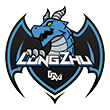
2. Longzhu Gaming
It took the Incredible Miracle/Longzhu organization five years to finally put together a team capable of making a run for the world championships, and the starting five from the summer split pulled off one of the most unexpected domestic league titles in the game's history.
Following a flat spring split where the club finished outside the playoffs, a youth movement in the summer and the signing of a Korean top laner from China's secondary league turned everything around. That journeyman, Kim "Khan" Dong-ha, established himself as the ace of the team in only a single season. The team's backbone and veteran leadership in the bottom lane of Kim "PraY" Jong-in and Kang "GorillA" Beom-hyun guided the team's green nucleus all the way to the league championship. Longzhu became the first club in history to defeat SK Telecom T1 in a domestic final.
While ranking the Dragons first would seem like the correct move, the team still has glaring weaknesses it will need to fix if it wants to stop SKT from completing a three-peat and winning its fourth overall Summoner's Cup. Most notably, the team's youngest and most inexperienced member, jungler Moon "Cuzz" Woo-chan, was exposed late in the season by target bans and his routine of hovering top lane to get Khan ahead in the early game with his carry champions. Khan, the superstar of the team, will also need to step up in China. After showing an adeptness with high-skill, damage-focused champions all split, his insecurity with tank and utility champions, along with his so-so flanking, could lead to issues in later rounds. Still, unless the team has the tag "SKT," Longzhu's raw brute force in the laning phase should see it comfortably through until the final rounds of Worlds 2017.
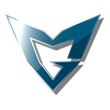
3. Samsung Galaxy
Much like last year, it's a bit unexpected to see Samsung over KT as South Korea's third seed. This is the second year that Samsung has upended Korea's other telecom team to claim its spot on the Worlds stage.
However, also much like last year, Samsung have had certain players step up along with smart, comfortable draft strategies to aid the team in its success. In 2016 it was Lee "Crown" Min-ho and Jo "CoreJJ" Yong-in who made a splash; this year it's veteran jungler Kang "Ambition" Chan-yong and top laner Lee "CuVee" Seong-jin. While CuVee's statistics still aren't as impressive as Song "Smeb" Kyung-ho or Jang "MaRin" Gyeong-hwan's, he was sometimes the player dragging the rest of Samsung over the finish line when the team appeared to lose its way mid-split. Ruler also stepped up in a big way, going from a liability in draft to an AD carry that held his own, even when his support was not acclimated to the current meta. Samsung may not be the team that was expected to be here, but it certainly can't be counted out, brackets depending, of another Worlds final.

4. Team WE
For much of the year, Team WE looked like the clear top team in China's League of Legends Pro League, but as with anything in LPL, it comes with a caveat. WE had to play three five-game series to even qualify for worlds, and lost two out of three domestically.
Perhaps the team's greatest strength is also its weakness; it's hard to characterize WE as having one style. Long gone is the "Elder Dragon" and "Son of Baron" era. WE can play effectively to a draft and understand a variety of different win conditions, but it works best with highly mobile solo laners and a heavy pressure laning phase to fight in the jungle or in bottom lane. The fact that WE can play a lot of different things makes it extremely difficult to prepare for, especially in single-game matches, and even if WE's foes chip away at its early game, Jin "Mystic" Seongjun has developed into one of the best team fighting AD carries in the world.
WE's bane comes through in its hubris. When WE tries to do too many things or drafts itself into a corner, it can fall as easily as it can rise. At its height, WE is the team from LPL most likely to take games from top South Korean powerhouses; at its lowest point, one might simply shrug if WE fails to escape Play-In.

5. Royal Never Give Up
Jian "Uzi" Zi-Hao has been well known in the international community since his debut in 2013, but the player to watch on RNG is mid laner Li "xiaohu" Yuan-Hao. The LPL's "little tiger" has grown exponentially as a player from his debut on Gamtee, to last year's RNG at Worlds, to his struggles in 2017 LPL Spring, to now.
Even with Uzi returning to the team after an injury, RNG has not fallen into the trap of funneling all of its resources to the AD Carry. Instead, the team is far more flexible, using Xiaohu's consistent mid lane play as a pivot point around which the rest of the team operates. Both side lanes of Yan "LetMe" Jun-Ze and Uzi/Ming are more than capable of carrying the team along with Xiaohu. RNG's drafts came under heavy criticism during the team's LPL finals loss, but the team should be able to put together some interesting strategies in best-of-ones, especially given how many carry threats RNG has. The true test for this team will lie in how it approaches best-of-fives, if RNG make it out of groups.

6. Team SoloMid
There are no excuses this go-around for TSM. The three-peating North American champion drew a group that doesn't possess any of the three South Korean teams. Following the past two years -- in which TSM was drawn into the "Group of Death" and failed to make it into the knockout stage -- it's put up or shut up time for the same five members who came into words last year with lofty expectations and couldn't even move through into the knockout rounds.
To the surprise of nobody, the team will once again flow through the talents of NA LCS league MVP and mid lane superstar Soren "Bjergsen" Bjerg. After coming up short in America last year at worlds, and once again in Brazil just a few months ago at the Mid-Season Invitational, this is Bjergsen's moment -- along with the rest of his team -- to rewrite the history of TSM at international events. If it can't, the team has no one to blame but itself.
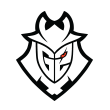
7. G2 Esports
The debate between Team SoloMid and G2 Esports comes nearly down to a hair. Both teams have a great deal in common.
Both have better fundamentals than other teams in North America or Europe.
Both benefit from having a better grasp of side wave control than other teams in LCS.
Both focus heavily on mid lane pressure and have discarded the approach of snowballing early to take more advantage of mistakes made by the opposition.
G2's advantages over TSM come from a stronger and more unified bottom lane duo, but in the current meta, mid lane control matters more. While G2 devotes a lot of attention and planning to keeping mid lane stable, Søren "Bjergsen" Bjerg can often keep mid pushed with blue buff and a reasonable matchup, freeing up the rest of his team. Luka "Perkz" Perković makes himself more vulnerable to pick-offs, necessitating more pressure from his side lanes. TSM also appears to have a better grasp of lane assignments, and G2 can leave its bottom lane exposed to push out top at bad moments. G2 ultimately leave fewer early openings than TSM, but the wrong lane assignment makes it easier to unravel them.

8. EDward Gaming
Despite finishing first in China, the fact that every LPL series featuring a semifinalist team stretched to five games makes ranking the Chinese participants less clear-cut. In terms of individual strength, EDG's Chen "Mouse" Yuhao remains a highly exploitable early-game weakness, giving up wave control nearly from level one. Ming "Clearlove" Kai's champion pool feels even more limited, especially with Lee Sin buffs on the new patch. Add a green AD carry with barely a few months' worth of high-level experience under his belt in Hu "iBoy" Xianzhao, and EDward Gaming looks more like a marvel of modern science than a top team.
EDG relies heavily upon Lee "Scout" Yechan getting his preferred lane-smashing picks, and the ability of Tian "Meiko" Ye to control the bottom side of the map on playmaking champions like Alistar. EDG believes in taking first-tier turrets as quickly as possible and have the resilience for long series, but the lower on the list teams fall, the more projected success in best-of-one matters, and EDG might have a rough climb ahead.

9. Flash Wolves
Flash Wolves have won four straight titles in Taiwan and is setting its eyes on a third straight world championship appearance. Unfortunately, the team's level went down a notch in the LMS this year due to its new initiative to be more flexible in the pick/ban phase. Not only that, but its superstar mid laner, Huang "Maple" Yi-Tang, underperformed during the summer split and isn't looking too hot heading into international competition. The saving grace of the team is support Huo "SwordArT" Shuo-Jie, who was not only the best support and player in the LMS, but is contesting to be the best support at worlds.

10. Immortals
In a lot of ways, Immortals will be facing a "big brother" version of itself in Longzhu when the opening group stage kicks off. Both Immortals and Longzhu finished seventh and out of the playoffs in the spring split before making drastic changes in the summer to ignite a miraculous run to the world championships. While Immortals could bully in the laning phase through the talents of renowned Korean top laner Lee "Flame" Ho-jong and rookie Cody "Cody Sun" Sun in North America, it'll be a whole different beast when the likes of Khan and PraY are on the other side of the Rift.
The saving grace that could help see the club through into the knockout rounds is the one changed starting member from the spring to the summer split, team leader Jake "Xmithie" Puchero. A veteran of multiple world championships and even a Mid-Season Invitational final last year with Counter Logic Gaming, the presence and synergy the star jungler brings, especially with Flame in the top lane, could make Immortals one of the most successful western teams at worlds this year.

11. Misfits
Despite struggles throughout the season, Misfits found its stride in playoffs by stabilizing around jungler Nubar "Maxlore" Sarafian and playing with pressure created by mid laner Tristan "PowerOfEvil" Schrage. Although it lost 0-3 to first seed G2 Esports in the EU LCS finals, Misfits showed strong team growth and understanding of the game, leveraging the team's love of diving turrets or pushing for objectives.
Misfits is a team with the capacity to excite and upset, especially in a best-of-one setting, due to its drafting strategies and proactive playstyle. What this team lacks in overall experience together it can make up for in preparation and slightly off-meta surprises, especially if those also mean unlocking igNar from the bot lane, or pressuring objectives early before opponents can scale.

12. Fnatic
"Fnatic give up mid lane control easily."
"Mads 'Broxah' Brock-Pedersen may have individual talent, but he fails to identify openings he can take."
"Bottom lane needs to generate pressure on its own and transfer it mid for the team to succeed."
These are commonly parroted Fnatic flaws exposed since Rift Rivals and its semifinal fall at the hands of Misfits, and they still stick out when the team falls under a critical eye. Slight improvements in Fnatic's series against H2K-Gaming should make fans more optimistic that their favorite team has at least identified some of its flaws and made steps toward improvement. These adjustments make Fnatic look like the stronger LCS third seed at Play-In compared to North America's Cloud9.
Key to a strong Fnatic is its veteran side lanes: Paul "sOAZ" Boyer, Martin "Rekkles" Larsson and Jesse "Jesiz" Le. Each player has drastically changed since the last time fans saw them on an international stage. sOAZ is in his best form in four years. Rekkles has turned up the laning phase aggression. And the most drastic change of all from Season 4: Jesiz is no longer a mid laner.

13. Hong Kong Attitude
Hong Kong Attitude is one of the strangest teams to qualify for the world championships, being that it didn't qualify for the LMS spring split or summer playoffs. Team chemistry is often sought in League of Legends, and HKA went through two whole rosters to get to the point it is at now. It certainly paid off, as HKA defeated Flash Wolves, ahq e-Sports Club and J Team twice to end the year and qualify for worlds. The anchor of the team is its bot lane Wong "Unified" Chun Kit and Ling "Kaiwing" Kai Wing, who need to get going for HKA to have success at worlds.
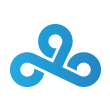
14. Cloud9
As the only NA team to make it to the knockout rounds last year, it is going to be a difficult road back for Cloud9 in 2017, as it'll be guaranteed a group with a South Korean team and a top Chinese club if it makes it out of Play-Ins.
It has been a rocky year for C9, following a stretch early on that made it look like the team would be the undisputed best coming out of NA. Instead of improving, C9 stagnated, losing to TSM in the spring split final before failing to make it into the top four come the summer split. It needed to win a close, heart-pounding series against CLG to even make it to the worlds championships; Cloud9 had a month off before playing a single best-of-five in the regional final to qualify. To add insult to injury, one of the team's greatest strengths, head coach Bok "Reapered" Han-gyu, could miss the Play-In stage, citing visa troubles.
15. FB 1907
Backed by soccer team Fenerbahce S.K., and arguably the strongest wild-card team to date in the history of League of Legends, Fenerbahce enters its first international tournament with a point to prove after sweeping TCL playoffs with two impressive 3-0 victories against Crew and Supermassive. The team is built around star Korean mid laner Kim "Frozen" Tae-il, whose aggressive play in lane is supported by heavy jungle priority and occasional roams from bot and top lane.
Jungler Kang "Move" Min-su is a veteran of the League of Legends Championship Series, having played for Unicorns of Love and Gravity in the past, and his acquisition has proven a masterstroke for Fenerbahce; he has provided strategic sophistication and early-game control to a roster that has always been overflowing with talent but lacking these key foundations. Fenerbahce is capable of a deep run at worlds with a kind draw, and it is the team that all major region competitors will be desperately hoping to avoid in the final round of Play-Ins. A potential elimination matchup with Cloud9, pitting Frozen against Nicolaj "Jensen" Jensen, is a mouth-watering possibility.
16. Gambit Gaming
The two names that jump out immediately on this roster are former Moscow 5/Gambit legends Danil "Diamondprox" Reshetnikov and Edward "Edward" Abgaryan. But this team is just as much about former Albus NoX Luna jungler (now returning to top lane, his original position) Alexander "PvPStejos" Glazkov and mid laner Mykhailo "Kira" Harmash. It's a hybrid of old, original CIS LoL with newer talent to make one of the stronger minor region teams at this tournament.
There is obvious thought and care to what Gambit wants to do as a team, even if the team fumbles the execution. Gambit have strong setups around objectives, especially Baron, but team execution is sometimes lacking. This is a team that can draft to try and spread the map as much as possible, especially if Edward picks up Tahm Kench and if Kira is on a strong waveclear mid. Diamondprox will adjust his jungling style as needed, and is good with identifying where to apply pressure early. Gambit's over-reliance of securing Gragas or similarly tanky top laner could be a weak point, since PvPStejos has sometimes struggled to keep pace with his LCL top brethren and will only be facing tougher competition at this event.
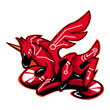
17. AHQ Esports
Ahq eSports Club might be the LMS' second seed, but it failed to impress in the final weeks of the regular season and playoffs compared to HKA. A clear reversion back to Liu "Westdoor" Shu-Wei in the mid lane granted the team more decisiveness in the mid and late game, but sticks the team with an anemic early game due to his poor laning. Chen "Ziv" Yi is still very much the spirit of the team at this point, and as Westdoor and Chou "AN" Chun-An's performances continue to wither, he is the main man for ahq's hopes at worlds.
18. GIGABYTE Marines
Gigabyte Marines made a lot of noise at the Mid-Season Invitational, from going up 2-0 against Team SoloMid to taking multiple games off major regions in the group stage. Unfortunately, Marines doesn't even stack up as the best minor region team this time around. At the very least, though, Marines now have Phùng "Nevan" Thiện Nhân and Nguyễn "NoWay" Vũ Long, who are solid improvements at the top lane and AD carry positions over their predecessors.
19. Team oNe
Team oNe is the Cinderella story of the League of Legends Brazilian Circuit (CBLoL). Three months ago, Team oNe was a Challenger series team under the INTZ Genesis banner and a sister team to the INTZ from Season 6 of worlds. That Team oNe squad went on to earn promotion to the CBLoL and became champions in back-to-back seasons. A macro-focused team by playstyle, sometimes Team oNe's mid-game map play, minion wave control and rotations can be breathtaking; a CBLoL finals game in which Team oNe gave up a single Inferno Drake for four towers against Pain Gaming, in particular, stands out.
Without a true star player, Team oNe stays flexible in its game plan and can play around any of the six players on its roster as the situation demands. However, Team oNe is not considered to be among the strongest mechanical teams in Brazil, and questions remain about whether this could hurt its chances against international competition, despite the team's obvious strategic strengths.
20. Lyon Gaming
In 2016, Lyon Gaming was one of the most hyped teams at the International Wild Card Invitational, but after a year, the narrative has certainly changed. Lyon has some of the best talent Latin America North has to offer, with power laners in Ali "Seiya" Bracamontes and Matías "WhiteLotus" Musso, but is lagging behind when it comes to setting up side waves or playing around Teleport. Strong laning just isn't enough to carry Lyon to victory against the stronger minor region teams, much less the major region Play-In teams.
21. Rampage
Since its inception in 2014, the LJL has been a battleground between Rampage and DetonatioN FocusMe. DFM has been the proactive early/macro team, and Rampage its counter punching teamfight-centric foil. With victories in both 2017 splits, Rampage has gained the upper hand over its rivals. In a Play-In stage dominated by early game jungle and mid pressure teams, this squad stands out as a team that chooses to set up safe vision lines and focus on punishing enemy macro mistakes early. It will fall back to strong teamfighting if the game goes long.
Built around the strong pathing of star Korean jungler Lee "Tussle" Moon-Yong -- and backed by intelligent roams from support Jeon "Dara" Jeong-Hoon -- Rampage should be well placed to punish overaggression from other play-in teams in a meta that rewards its style. Unfortunately, with arguably the toughest draw of any play-in team, it is difficult to see Rampage making it out.
22. Dire Wolves
The champion of the Oceanic region, LG Dire Wolves has succeeded in winning Oceanic Pro Leauge in successive splits in 2017 by using early game laning advantages to enable aggressive jungle invades from Shern "Shernfire" Tai. The team plays a pressure-focused early game based on tracking and attacking the enemy jungler. Mid laner Richard "Phantiks" Su and Shernfire will then look to snowball jungle control into side lane objectives.
However, mid-game problems persist, specifically around side lane minion wave control and deep vision. DW can also lack proactivity if central playmaker Shernfire is not on a champion with strong engage potential in the mid game; expect Zac bans from the squad's opponents. The DW versus Team oNe matchup for progression from Group B is likely to be one of the most interesting and closely contested of the Play-In stage, representing both a stylistic clash and a renewal of the historic CBLoL and OPL rivalry of previous wild-card events.
23. Young Generation
A somewhat apt name for a team comprised of many players who started their careers in 2016, Young Generation qualified for the Garena Premier League by placing second in the Vietnamese Championship Series. Effectively, this means YG spent all summer getting kicked around by the dominant Vietnamese team, GIGABYTE Marines.
During the Marines' rebuilding period early in the split, YG managed to take games from them, making the young team the closest thing the Vietnamese powerhouse had to a rival in Southeast Asia. In the GPL, YG took the second spot after the Marines to qualify for the world championships in a grueling five-game series with Thai team Ascension, probably better known for having the majority of its roster in common with Bangkok Titans, a team that made worlds in 2015. YG plays primarily through mid laner Bùi "Venus" Nguyễn Quốc Hoàng, who accrued a monstrous score line of 17/1/10 in a pivotal Game 4 against Ascension that cemented the Vietnamese team's reverse sweep comeback.
24. Kaos Latin Gamers
KLG is one of the most bot lane-focused teams in a region that has traditionally prioritized teamfighting and getting bot lane ahead. Against Isurus Gaming in the finals of its domestic league, KLG was able to snowball AD carry Nicolas "Fix" Sayago in consecutive games due to high priority on top lane Shen and roaming mid picks Taliyah and Galio. That strategy also worked well for the team throughout the second split of the Latin America South Cup (CLS).
The key player for the team at worlds will be jungler Sebastian "Tierwulf" Mateluna, a player who has played every role except mid at a professional level. KLG is a solid early game team but has a tendency to over-group and play grouped as five without proper side wave control. However, in a meta that rewards teamfighting and engage, there is a chance that the team's weaknesses could be covered for and KLG could surprise, especially if groupmates Fnatic and Young Generation have not properly prepared for Tierwulf's unconventional early-game pathing.

